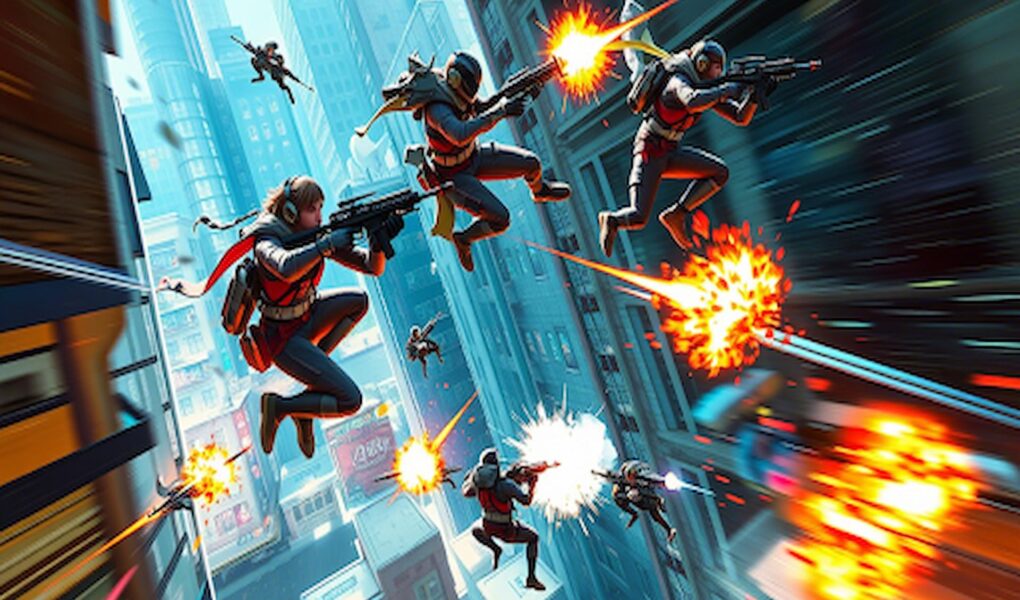In recent years, the first-person shooter (FPS) genre has undergone a massive transformation. From slow-paced tactical shooters to fast, high-octane battle royales, games like Apex Legends have redefined how multiplayer experiences feel. Developed by Respawn Entertainment, Apex Legends masterfully blends unique character abilities, precise gunplay, and vertical mobility to create a thrilling and competitive environment.
If you’re a developer or part of a 2D animation company exploring the 3D multiplayer space, understanding how such a game is built from the ground up is essential. Designing a high-intensity FPS requires more than flashy weapons and stunning maps it demands thoughtful systems, intuitive controls, strategic depth, and player retention techniques.
Mastering the Core
Every successful FPS game begins with a rock-solid core: the mechanics. This includes shooting, movement, jumping, crouching, sliding, aiming, and environmental interactions. In Apex Legends, the fluid parkour-style movement and responsive gunplay elevate the experience beyond the typical shooter.
To emulate this, prioritize low-latency input, server-client synchronization, and animation blending. Bullet drop, recoil patterns, and hit registration must be designed to feel fair and consistent. If you’re coming from a 2D animation company background, use that foundation to animate key mechanics like reloads, sprints, and weapon swaps for added realism.
Key Takeaway:
- Use motion capture or hand-keyed animation to polish every movement.
- Ensure player controls are intuitive, fast, and satisfying with minimal input lag.
Building Dynamic Heroes
Apex Legends introduced a class-based system where each character or Legend has unique abilities. This hybrid of hero shooter and battle royale makes character choice a tactical decision. To replicate this innovation, build a roster of characters with clearly defined roles (e.g., support, offense, defense, and recon).
These roles must be balanced and strategically diverse. Collaborate with narrative designers, artists, and possibly a 2D animation company to prototype character concepts before translating them into 3D. Visual design should reflect gameplay capabilities players should know a sniper from a healer at a glance.
Key Takeaway:
- Characters must feel different not just in ability but in personality and design.
- Ability animations should be clear, readable, and stylistically consistent.
Crafting Immersive Maps
Map design is more than aesthetics it’s a core gameplay pillar. Apex Legends shines in its verticality, cover systems, and environmental storytelling. Each map zone tells a story and offers unique tactical advantages.
Start by sketching basic layouts that guide player flow. Use natural and manmade elements (e.g., cliffs, ziplines, towers) to create choke points and flanking routes. Make sure maps cater to multiple playstyles snipers need long sightlines, while brawlers thrive in tight interiors.
Consider bringing a 2D animation company onboard to storyboard scenarios and visualize player movement paths before you move to 3D layout blocking.
Key Takeaway:
- Design maps that reward exploration and smart positioning.
- Introduce verticality to enable high-skill movement and ambush opportunities.
Weapons, Attachments, and Balancing the Arsenal
Weapon diversity is crucial in maintaining long-term engagement. Apex Legends features a broad array of guns, each with unique damage profiles, handling, and available attachments. From shotguns to sniper rifles, variety encourages experimentation.
Start with a core weapon pool: ARs, SMGs, snipers, shotguns, and pistols. Then, expand with variants and special weapons. Attachments like scopes, barrel stabilizers, and extended mags add tactical depth. Balance is an ongoing challenge gather data, conduct player testing, and tweak values accordingly.
Incorporate visual design expertise perhaps from a 2D animation company to create detailed weapon animations that feel powerful and responsive.
Key Takeaway:
- Each gun should have a distinct feel and niche.
- Attachments should enhance gameplay without overpowering base weapons.
Abilities and Cooldowns
One of the standout mechanics in Apex Legends is its tactical and ultimate abilities. These introduce MOBA-like depth to moment-to-moment combat. Designing abilities means carefully considering impact, cooldowns, counters, and synergy between characters.
To begin, draft ability concepts that align with a character’s lore and combat role. Create flowcharts showing how abilities interact with the environment, teammates, and enemies. For visual effects and telegraphs, consider hiring a 2D animation company to create concept art and pre-visualizations.
Abilities must be powerful enough to matter but not so overwhelming they replace gun skill.
Key Takeaway:
- Cooldowns and ultimate charge rates are balancing levers.
- Visual clarity is vital players must immediately understand what’s happening.
Fast-Paced Game Loops
Pacing is everything in a high-intensity FPS. Apex Legends shines by maintaining a rhythm of calm exploration and sudden firefights. Drop zones, shrinking rings, loot scarcity, and audio cues all contribute to the pacing.
Design your game loop with both downtime and high-stress moments. Create “hot drop” areas with high-tier loot and contested entry points. Incorporate a dynamic ring mechanic or map events to push players into conflict naturally.
Your background as a 2D animation company can help with designing UI animations, HUD transitions, and immersive cut-ins that enhance the loop without interrupting it.
Key Takeaway:
- Momentum matters. Avoid dead zones and overly long downtime.
- Use environmental cues and sounds to guide pacing organically.
Art Direction and Animation
Visual identity is what makes your game memorable. Apex Legends stands out with its colorful yet gritty aesthetic, distinct character designs, and fluid motion. Even if you’re creating a 3D FPS, the principles of animation and style from a 2D animation company can elevate the visual polish.
Invest in a consistent art direction from the start. Define your world’s tone sci-fi, post-apocalyptic, fantasy, or cyberpunk and make all assets follow this guide. Animations should enhance feedback: aim, shoot, reload, and get hit all should feel snappy and reactive.
Motion design for menus, kill cams, and UI transitions can be handled expertly by a 2D animation company, especially if they have game design experience.
Key Takeaway:
- Visual consistency and feedback are crucial for immersion.
- Animation should be as responsive and satisfying as the gameplay itself.
Sound Design and Audio Cues
In a fast-paced FPS, sound is a tactical tool. Footsteps, reload clicks, grenade pins, and ultimate abilities charging these sounds must be distinct and useful. Apex Legends uses directional audio and voice lines to keep teams informed.
Build an audio engine that supports spatial sound. Tag each action with specific cues. Design different sound sets for surfaces (wood, metal, grass) and make them readable in 3D space. Don’t forget UI and menu audio they contribute to a polished experience.
Even if you’re a 2D animation company, you can work with sound designers or integrate dynamic animations triggered by audio events.
Key Takeaway:
- Audio is not just for immersion it’s essential for situational awareness.
- Use sound to teach, warn, and reward players in real time.
Scalability, Monetization, and Community Retention
Your game is built. Now what? Long-term success depends on live services, regular updates, player feedback integration, and monetization strategies that don’t alienate your base. Apex Legends thrives because of its seasonal structure, cosmetics, and engaging community events.
Plan your backend to support frequent content drops. Design cosmetic systems (skins, banners, emotes) that tie into gameplay without being pay-to-win. Offer ranked and casual modes, and reward loyal players with progression systems.
A 2D animation company can play a role here by producing seasonal promotional content, animated trailers, or cosmetic designs that drive in-game purchases.
Key Takeaway:
- Post-launch support is where good games become legends.
- Build a community-first approach with ethical monetization strategies.
Conclusion
Designing a high-intensity multiplayer FPS like Apex Legends is a monumental task but with the right approach, it’s entirely achievable. From rock-solid mechanics to expressive characters, immersive maps, and thoughtful monetization, every piece must fit together seamlessly.
Whether you’re a solo developer or a 2D animation company expanding into 3D games, these principles will guide your path. Stay committed to polish, listen to your community, and always prioritize fun, fairness, and freedom in your design.




